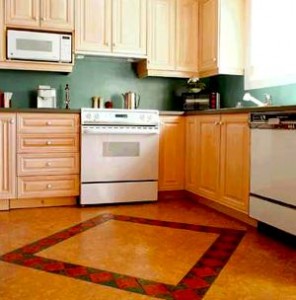Renewable Building Materials

Engineered Wood Products - Roof Trusses
Many of the materials used in today's modern home construction take a heavy toll on the environment. Petroleum-based products are a non-renewable resource closely associated with climate-changing pollution; toxic manmade chemical substances create unhealthy air conditions inside the home. Unsustainable forestry practices also contribute to elevated levels of climate-changing carbon, and contribute to habitat loss for endangered plant and animal species as well as soil erosion, water pollution, and more.
A green home seeks to reduce or eliminate all of these negative inputs and seek out greener, more sustainable materials. The good thing is that there are more choices today than ever before. These rapidly renewable materials can drastically reduce the environmental impacts of any home.
What is a Rapidly Renewable Material?
A broad definition of a rapidly renewable material is any material that is natural and non-petroleum based, with a harvest cycle of under 10 years.
Most rapidly renewable materials are biodegradable, often low in VOCs, and produced from agricultural crops. This makes them less energy-intensive to produce since their main energy input is the sun.
Types of Rapidly Renewable Materials
There is a wide variety of building materials sourced from rapidly-renewable sources. The list includes products made from bamboo, straw, cork, natural linoleum, wool, and wheat- and strawboard, among many others.
Some green building products are made with a combination of rapidly renewable materials and post-consumer recycled content like newspapers, cotton, soy-based materials, and more.
Some of the more popular renewable building materials are:
Bamboo: Bamboo, which is actually a grass, is extremely durable and grows very quickly without much input from humans. Most bamboo can grow to harvestable size in 3 to 5 years. Bamboo's extreme durability, hardness, and short regeneration time makes it a great voice for flooring, countertops, or kitchen cabinet applications.
Cork: Cork is a natural material being used for flooring systems. It's a natural material that comes from the outer bark of the cork oak tree. It is sustainably harvested without killing the tree, and regenerates in about ten years' time. Manufacturing cork products generates almost no waste. It's a durable, sound-absorbing material that is moisture-, rot-, and mold-resistant. In addition to flooring, cork is also used in some types of wall coverings.
Linoleum: Another good choice for durable, low-maintenance flooring is linoleum. Linoleum flooring is made from linseed oil, pine rosin, sawdust, cork dust, limestone, natural colorants, and a natural jute backing. It contains no significant amounts of petroleum-based products or chlorinated chemicals found in PVC. All of its ingredients are minimally processed and widely available. Linoleum is also a good choice for table or countertop surfaces.
Agricultural Waste: Particleboard can be made from the agricultural waste left over from the harvesting of grains such as rice, wheat, oats, or any number of other plants. The stems and other leftover plant materials are compressed into durable particleboard similar to wood, and are usually made with non-formaldehyde binders. This particleboard product can be used anywhere traditional wood particleboard is used, such as cabinetry or doors.
Soy: Some insulation companies are replacing toxic and non-renewable insulating components such as polyurethane to lessen their environmental impacts. These 'bio-based' products are made from natural renewable ingredients such as soy, without affecting the beneficial energy-saving benefits they provide.
Textiles: Durable natural fibers from jute, coconut husks, cotton and wool can be made into natural-fiber mats, carpets, or wall coverings to replace materials made from non-renewable materials sourced from petroleum, like plastic or PVC vinyl.
Sustainable Wood Products
While most products classified as 'rapidly renewable' are generally wood-free alternatives, wood is actually a renewable material as well if it's harvested sustainably and responsibly to avoid over-cutting and clear-cutting.
Any wood products chosen for a green home should be as sustainably-sourced as possible. The best way to identify and choose these products is to look for certification labels from organizations such as The Forest Stewardship Council,(FSC) and the Sustainable Forestry Initiative (SFI).
These third-party certification programs verify that wood is sustainably harvested. Wood products without these certifications may come from old-growth forests, tropic rain forests, or unsustainable tree farms.
The use of reclaimed wood is another form of a renewable material. Since no new material is taken from nature, the environmental impact of using (reusing, actually) reclaimed wood is significantly reduced. This wood can be salvaged from older structures scheduled for demolition, or from companies that salvage hardwoods from river beds, where they were lost during the great logging periods of the 19th and early-20th centuries.
There are many types of exciting new renewable building products available today and are definitely worth seeking out when choosing the materials for a new green home or renovating an existing one. Choosing products made from renewable and recycled materials is one of the best, and easiest, ways to shrink a home's environmental footprint.
comments powered by Disqus

























































































































































































